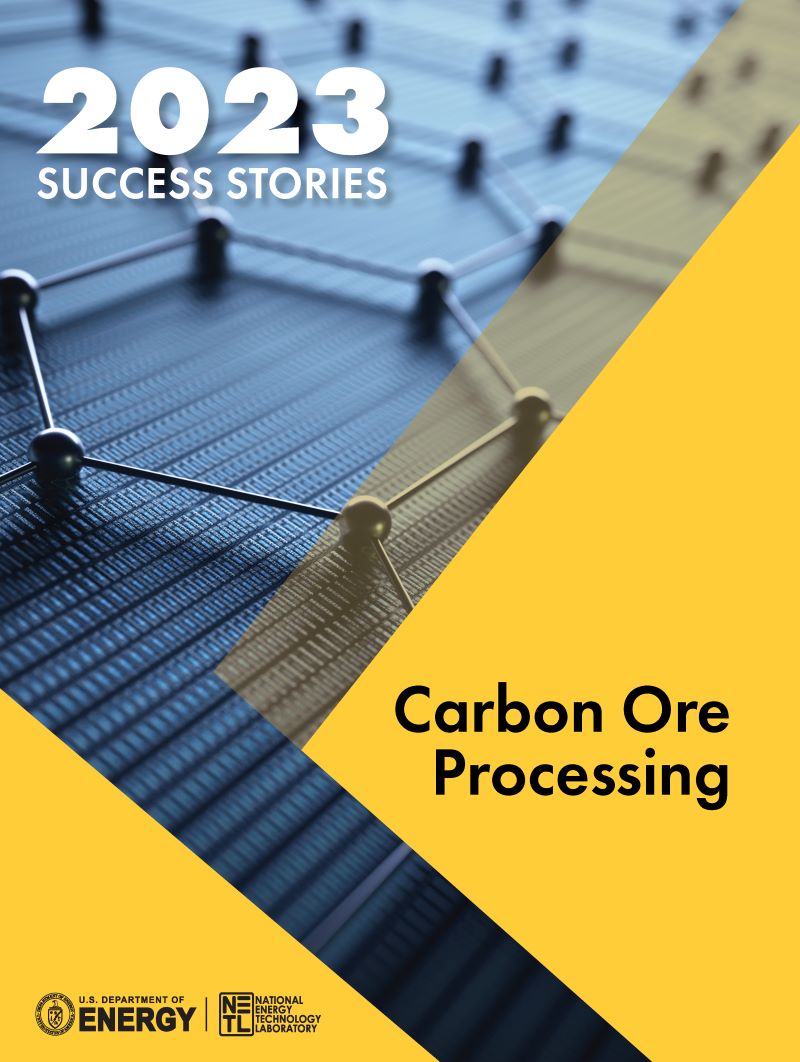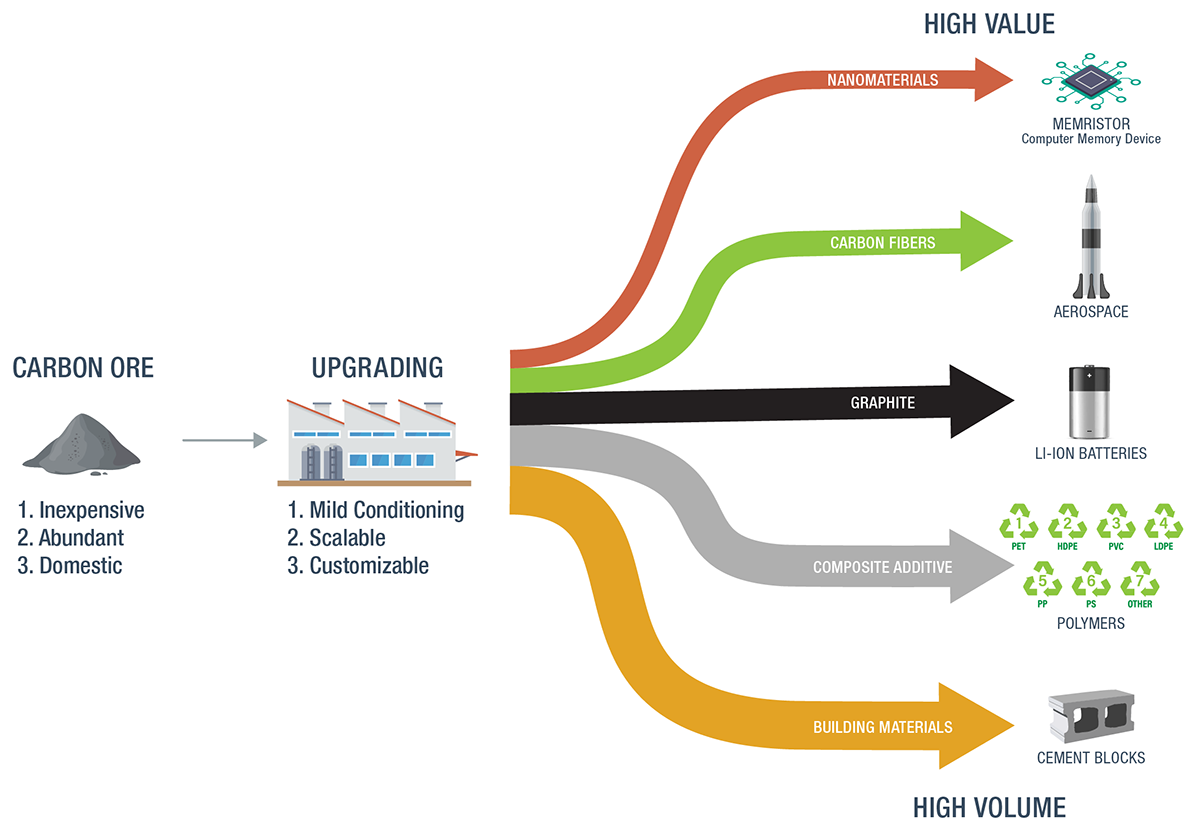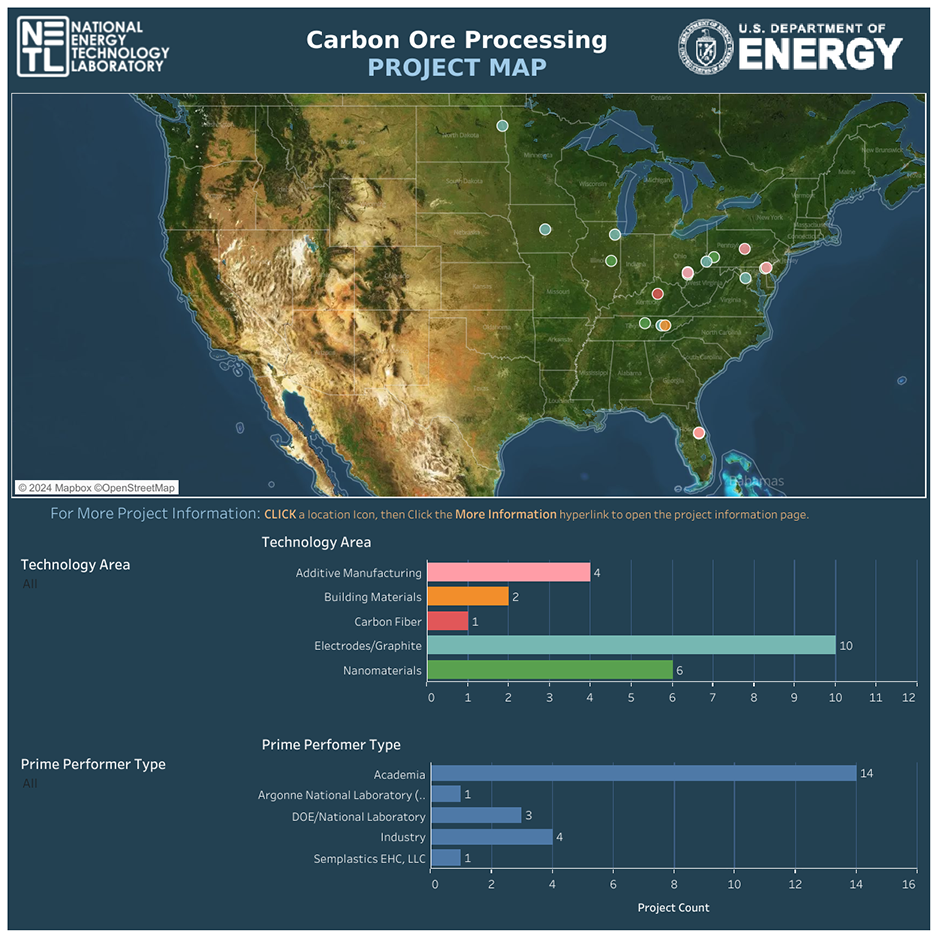Carbon Ore Processing

Coal is a domestic resource that has contributed to economic growth in the United States for more than a century. However, under a shifting energy generation paradigm, innovation is required to extract the full economic value from coal and to remediate legacy impacts associated with past extraction and use. The Carbon Ore Processing Program at NETL delivers solutions to this challenge with novel technologies for producing valuable products from coal. The program supports laboratory and pilot-scale research and development (R&D) that elevates the value of the nation’s coal resources and transforms their use for the future. The program focuses on developing a range of carbon products spanning the entire value spectrum, from high volume through high value.
Transforming the Coal Value Chain

Coal’s unique structure and composition makes it well suited as a feedstock for high-value carbon products such as carbon fibers, graphite for batteries, additive manufacturing filaments and resins, and carbon nanomaterials for advanced electronic and metal alloy applications. Coal is also abundant and low cost, making it an attractive feedstock for high-volume applications such as building materials, as a concrete additive, and for use in polymer composites. These markets, which are outside of traditional thermal and metallurgical roles, expand the coal value chain in the United States and sustain jobs within a critical sector of the U.S. economy.
Examples of products pursued within Carbon Ore Processing Program R&D include:
- Graphite and hard carbon for electrochemical applications including lithium-ion and sodium-ion batteries, respectively, as well as carbon fibers for carbon-carbon composites and polymer enhancement.
- Carbon fibers/foams and modified coal products for building materials such as roofing tiles, siding, decking, insulation, joists/studs, sheathing, tiles and carpet, wraps and veneers, and architectural block.
- Carbon nanomaterials such a graphene, quantum dots, and nanotubes for additive manufacturing (filaments, resins and conductive inks), battery anodes, supercapacitors, memristors and carbon-metal alloys.
For more information on potential new markets for coal and the emerging technologies being developed by the Carbon Ore Processing Program, click on the links under Explore the Site.
Explore the Site
NETL implements this effort as part of DOE’s Resource Sustainability Program




